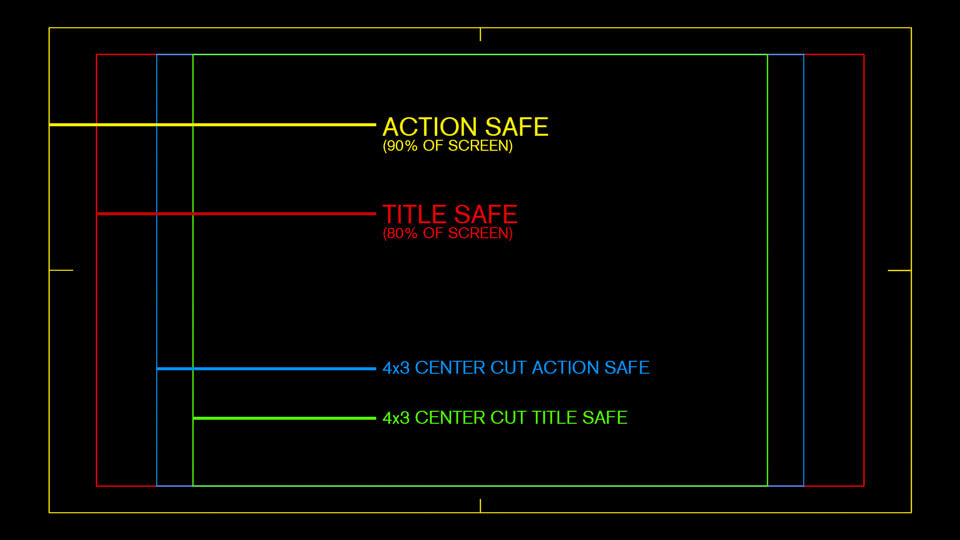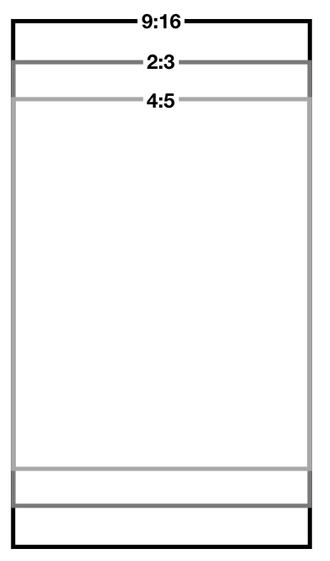When videos are created, there is an element that should be included in the image design. In widescreen formats created for television, cinema, or other devices, for example, there are safety margins that indicate where the title or actions may take place so as not to be cut off on different devices.
The safety margins ought to be made clear to customers, producers, cameramen, editors, and graphic designers. As a video content creator, ignoring the safe margin can mean that many viewers will not see text or other important information in the video (Swanson, 2018).
Cathode ray tubes (CRTs) were once used to project images onto television screens. Some of the image is cut off at the edges due to differences in TV manufacturing and the wear and tear on CRT magnets. The Society of Motion Picture & Television Engineers (SMTPE) has collaborated to develop secure headers and convertible areas to combat this cropping of images. To prevent information from being cut off from the viewer’s screen, these are the areas of the screen where all text and crucial actions should be placed (ibid., 2018).

The safe areas are:
- 80% of the screen are title safe
- 90% for the screen are actions safe.
SMTPE updated the safe zone when HDTV format dominated the market. The screen is cut off less by the new safe area than by the old safe area. Title safety is 90%, and action safety is 93%, in the new zones. These updated margins are rarely used, but when they are, they serve as guidelines for weaving errors (like the logo in the corner) and the bottom third (ibid., 2018).
A “centre cut safe” is still required by many broadcasters. This makes sure that the text won’t be cut off at the sides for people who still have old 4:3 TVs. The videos will not pass quality control if they do not meet the safe areas (ibid., 2018).
However, it is still impossible to assume that every TV has a flat screen. Unfortunately, the majority of HD and 4K TVs still have overscan, which can be manually turned off, which causes the edges of the image to be cut off (ibid., 2018).
Online and Social Media Videos
With online videos, there is a mentality of acceptance. A lot of people only use a safe space for aesthetic reasons or because their video is compatible with both the internet and broadcast/cable. Safe spaces are completely ignored in some online videos. The widescreen aspect ratio of different phones varies. Video can be zoomed in so that it appears in full screen mode on all new phones. The picture’s top and bottom are cropped by this zoom. This zoom is set by default on some devices, so many users probably don’t even know about it. The full-screen mode is actively used by other users (ibid., 2018).
Nonetheless, consumers aren’t just using full-screen mode these days. Because not every device has the same aspect ratio, it is essential to create safe areas for actions and titles in portrait formats, which are gaining popularity.


Social media uses the 9:16 format, which is a standard 16:9 video flipped vertically. This aspect ratio is used in Facebook Stories, Instagram Stories, and IGTV to really immerse the viewer and fill the screen. In user Instagram galleries, the traditional square ratio of one to one is frequently used. Their profiles and feeds for followers show these posts. Due to the fact that it takes up more screen space than standard 16:9 videos, it is also a popular format on Facebook. There are also 4:5 and 2:3 aspect ratios, which are a compromise between 1:1 squares and vertical cropping. Instagram uses the 4:5 aspect ratio more often than Facebook, while Facebook only uses the 2:3 aspect ratio. However, since the format alters over time, aspect ratio information must be continually adjusted (Mears, 2019).
Bibliography
Swanson, Erik. (2018, August 19).Yes, Title safe still matters – especially for online video. https://eks.tv/title-safe-still-matters/
Mears, Dan. (2019, May 9). A Cinematographer’s Guide to Shooting Vertical Video: Part 1.http://danmears.tv/vertical-video/